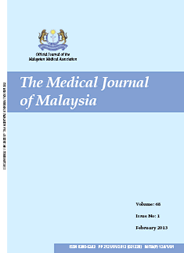MJM, Vol 70 Supplement 1 September 2015
Selection and missingness as threats to causal
inference in longitudinal community based NCD research
Julius Centre University of Malaya, Department of Social and Preventive Medicine, Faculty of Medicine, University of Malaya
ABSTRACT
Introduction: Community based NCD prevention strategies commonly derive evidence from longitudinal study designs, which includes cohort and randomized control designs. Common threats to causal inference include selection, confounding, and measurement bias. The aim of this paper is to address the methodological issues arising from selection and missingness that commonly occurs in longitudinal community based NCD research
Methods: This is a review identifying bias in causal inference arising from selection and missingness and suggesting methods that can be used to minimize these biases.
Results: Selection bias is a common problem. It is a function of study participants selection, response rate, follow-up, and protocol requirements. Selection bias occurs when the observed association between the exposure and outcome in the analytical sample is not the same as the one in the source population. Two types of selection bias is immigrative and emigrative selection bias. Immigrative selection bias is introduced at the stage when participants enter the cohort. Emigrative selection bias occurs when participants are selected out of the cohort due to reasons that are affected directly or indirectly by the exposure and outcome. Though experimental study designs are good at limiting immigrative selection bias but it is still vulnerable to emigrative selection bias because participants are commonly selected out because of dropping-out or being loss to follow up. This talk will elaborate on how inverse probability weighting can address these drop outs using the conditional selection probabilities at the different study visits and reduce the effect of emigrative selection. The other practical problem in longitudinal studies is missing data. This talk will elaborate on missingness in general and specific to longitudinal studies.
Conclusion: Selection bias and missingness are two important threats for causal inference. More robust evidence can be produced from longitudinal research through the proper identification and handling of selection and missingness.
